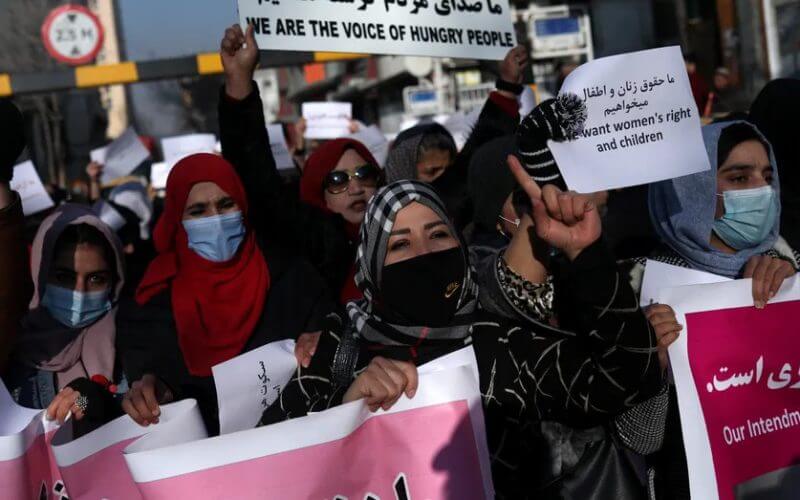Iranian women have taken to the streets to protest the country’s repressive laws against women, and women in neighboring Afghanistan are taking notice.
Widespread protests erupted across cities in Iran after the death of 22-year-old Mahsa Amini on Sept. 16 while she was detained by the morality police for violating Iran’s strict laws requiring women to cover their hair in public. What began as initial outrage over Amini’s tragic death quickly spiraled into anti-government protests and calls for the downfall of the revolutionary regime of Ayatollah Ali Khamenei.
The crackdown from Iran’s security forces, particularly the Basij paramilitary force within Iran’s Revolutionary Guard have been severe. Since protests began in mid-September, U.S.-based Human Rights Activists News Agency estimated that nearly 500 protesters have been killed and at least 18,000 have been arrested.
Women in Afghanistan see a familiar pattern playing out against Iranian women, although on a far smaller scale at the moment. Women’s rights protests are nothing new to Iranian or Afghan society, and movements in each country have influenced each other due to cultural, linguistic and geographic proximity.
Protesters in Iran have not lost sight of their neighbors in Afghanistan, who are also locked in a struggle with an oppressive regime that curtails women’s rights. Women in the streets are showing unity through graffiti art and protest chants.
Whether the protests in Iran will have a cascading effect on Afghanistan and the wider region will depend on how the movement can withstand the regimes forceful response and if it can survive continued repression.










